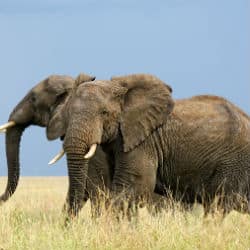Evolution May Rescue Elephants From The Threat Of Poaching
 Poachers who hunt elephants in an attempt to take their ivory may have an obstacle they simply cannot overcome in the form of nature’s most powerful force, natural selection. There are at least two African national parks which have suffered greatly from poaching. What is truly fascinating is that in these parks the majority of females are now born without tusks. This is an astonishing development and were the trend to carry into the wider elephant population, it would have dramatic implications on elephant poaching.
Poachers who hunt elephants in an attempt to take their ivory may have an obstacle they simply cannot overcome in the form of nature’s most powerful force, natural selection. There are at least two African national parks which have suffered greatly from poaching. What is truly fascinating is that in these parks the majority of females are now born without tusks. This is an astonishing development and were the trend to carry into the wider elephant population, it would have dramatic implications on elephant poaching.


